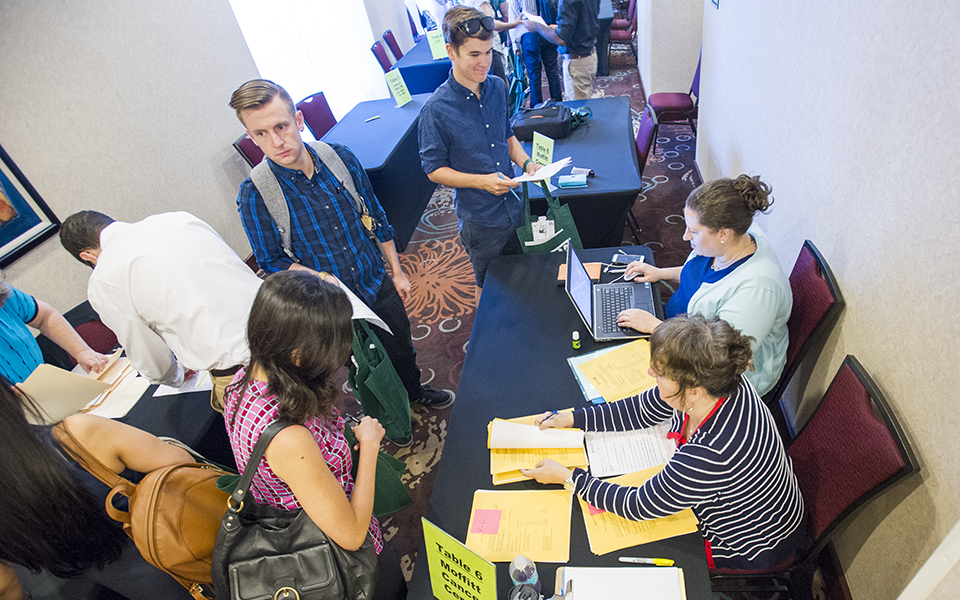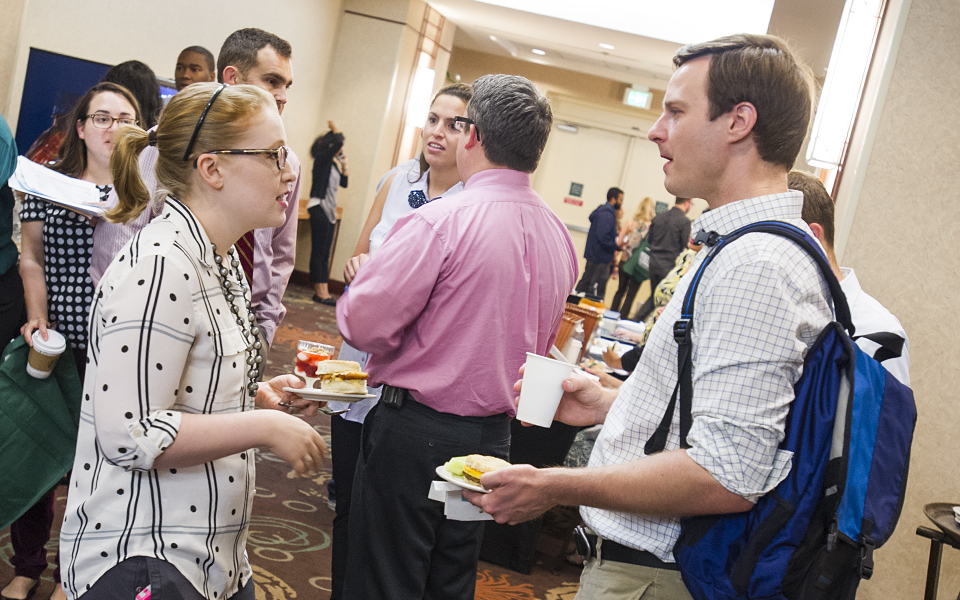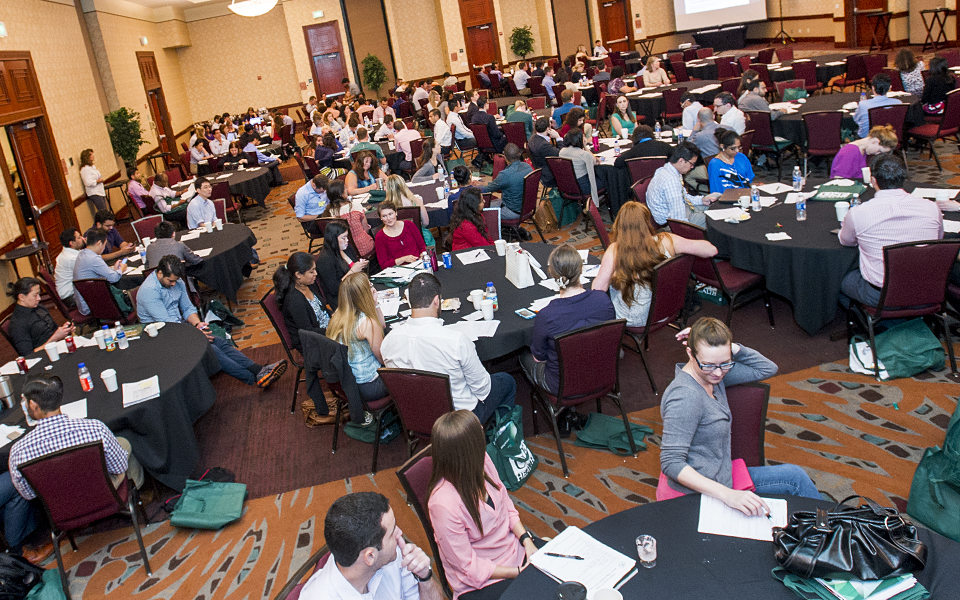A heartfelt welcome, some good advice for navigating USF Graduate Medical Education program, and a glimpse of the hard realities found in today’s health care system were part of the morning for 225 new resident physicians taking part in their orientation, held June 30 at the Embassy Suites on the USF campus.
The orientation precedes the July 1 start day for when resident physicians across the country begin their training and when USF residents are deployed to the many clinical facilities and hospitals throughout the Tampa Bay area affiliated with the USF Health Morsani College of Medicine.
Setting the stage for the greater demand for providing higher quality care over total costs, residents were urged to be cautious in their expenditures and more cognizant of individual patient outcomes by Charles Paidas, MD, professor of surgery and vice dean for Graduate Medical Education (GME) at MCOM.
“So for 10 minutes we’ve been talking about (improving the use of health care) money, but really we’re talking about culture,” he said. “Transformation of how we take care of patients is no longer ‘I have to see a whole bunch of patients’ but is now ‘each patient that I see has to be a quality, grand slam, homerun hit.”
USF’s residency program has more than 80 residency and fellowship training programs with more than 700 trainees.
This year’s entering group includes 225 physicians, with 145 residents and 80 fellows. Of the residents, about half are entering their first year of residency. Called PGY1s (post graduate year 1), these physicians are experiencing the first day of their medical careers – they just graduated from medical school a few months ago. In residencies, newly graduated medical doctors transition to the next phase of their education. Unlike in medical school, when decision making was ‘virtual’ and practiced in the shadows of the care team, residencies have the responsibility shift to these new doctors.
The other incoming residents are beginning the next step in their residencies, transitioning to a narrower focus within their specialty. Fellows have finished their residencies and are now conducting additional, more specialized training within their specialty. Fellowships are typically highly competitive positions in superior programs. While most of the new resident physicians are from MCOM (41), the rest are graduates of schools and programs from farther afield, including China, India, Japan, South Korea, Spain, and Thailand, among others.
One new resident didn’t have to travel far; Neil Manimala, MD, is an alum of USF Health MCOM and is specializing in urology. He said his choice for USF’s urology residency was easy.
“I chose to stay at USF because I believe it is one of the best urology programs in the country,” Dr. Manimala said. “Our residents are thoroughly trained to be both quality-driven clinicians and effective educators of patients and junior physicians alike. From the high-tech robots to the more basic tools of the field, we are empowered to deliver what is truly the best urological care that the region has to offer. From TGH to the VA to Moffitt, our faculty are among the best. I’m excited to work with the USF Urology family in the years to come. Furthermore, in my time in this city, I have been a witness to the unstoppable growth and development in Tampa Bay. As we move our college to the heart of this city, I’m honored to be a part of that growth. The sand, sun, and diversity don’t hurt either. I’m looking forward to giving all the people in this community — from my co-residents and our faculty to my patients and their families — my absolute best.”
Dr. Paidas concluded his orientation remarks with three words he asked the room full of new doctors to remember across their residencies, along with the lesson on value from earlier in the morning: Safe, team, and commit.
“These are the three words I want to leave you with besides value,” he said. “We want to graduate as a safe doctor, be able to work in a team, and commit to your obligations of lifelong learning, to your patients, to your peers and students, your department, and the USF Health Morsani College of Medicine.”
This year’s residents and fellows totaled 225. About 45 percent are starting at Tampa General Hospital, 25 percent at the Haley VA Hospital, 15 percent at Moffitt Cancer Center, and the remaining are at various other sites. Internal medicine welcomed the largest number of new residents and fellows, with 86, followed by surgery, with 25.
Here is a breakdown of the entire group:
Dermatology, 5
Family Medicine, 9
Cardiology, 7
Internal Medicine, 86
Neurology, 13
Neurosurgery, 4
Obstetrics and Gynecology, 8
Ophthalmology, 3
Orthopaedics, 7
Otolaryngology, 2
Pathology, 7
Pediatrics, 17
Plastic Surgery, 3
Psychiatry, 9
Radiology, 20
Surgery, 25
Photos by Eric Younghans, USF Health Office of Communications












